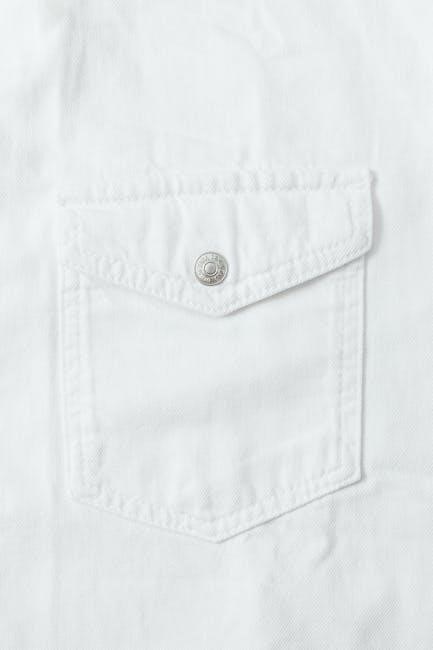Master the art of Tailoring in WoW SoD Phase 2 with this comprehensive guide, covering essential techniques, materials, and crafting strategies from level 1 to 225.
Overview of Tailoring in Season of Discovery Phase 2
Tailoring in WoW SoD Phase 2 offers a wealth of opportunities for crafters, with new recipes and materials becoming available. This phase introduces spellpower gear for casters, addressing the scarcity of spellpower in early content. Tailors can craft essential pre-raid items, such as robes and gloves, which are highly sought after for dungeons like Blackfathom Deeps. Additionally, the demand for 12-slot bags remains high, making them a profitable craft. As players progress, Tailoring becomes a key profession for both personal advancement and contributing to guild needs. With the right strategies, Tailors can efficiently level their skills and produce in-demand items, making this phase a rewarding time to master the craft.

Materials Required for Tailoring in Phase 2
Cloth, thread, and dyes are core materials, with rare components like spellpower fabrics and enchanted threads needed for high-end recipes. Efficient material management is crucial for crafting success.
Cloth and Thread: Essential Components
Cloth and thread are the backbone of Tailoring in WoW SoD Phase 2. Various types of cloth, such as Linen, Wool, Silk, Mageweave, and Runecloth, are required for crafting different items. Each type of cloth corresponds to specific levels of crafting, with higher-quality cloths like Runecloth being essential for advanced recipes. Thread is a universal material used in nearly every Tailoring recipe, making it indispensable. Additionally, specialized materials like spellpower fabrics and enchanted threads are introduced in Phase 2 for crafting high-end gear. Managing these resources efficiently ensures smooth progression through the Tailoring skill tree. Cloth can be obtained through loot, vendor purchases, or farming specific mobs, while thread is readily available from vendors. Balancing cloth and thread usage is key to mastering Tailoring in this phase.
Dyes and Other Crafting Materials
Dyes and other crafting materials play a crucial role in Tailoring, allowing for customization and enhancement of crafted items. Primary dyes like Crimson, Midnight Blue, and Emerald enable tailors to create vibrant, unique gear. Secondary dyes, such as Onyx and Amber, add additional color variations. Beyond dyes, materials like spellpower fabrics and enchanted threads are essential for crafting high-end items, particularly for casters. These materials enhance the stats of crafted gear, making it more desirable for players. Dyes can be purchased from vendors or crafted using alchemy, while spellpower materials are often rare drops or rewards. Managing these resources effectively is key to creating top-tier Tailoring products in Phase 2.
Farming Locations for Rare Materials
Farming rare materials is essential for advanced Tailoring in Phase 2. Key locations include Desolace, where Frostweave and Mooncloth can be found, and Stranglethorn, known for Shadowcloth drops. The Hinterlands is another hotspot for rare fabrics, particularly Silk and Mageweave. These materials are crucial for crafting high-end gear and bags. Focus on areas with high mob drop rates and consider grouping with others to optimize farming efficiency. Herbalism and Skinning can also complement material gathering. Plan your farming routes strategically to minimize travel time and maximize resource collection. Rare materials are in high demand, making them valuable for both crafting and selling on the AH.

Leveling Your Tailoring Skill in Phase 2
Mastering Tailoring in Phase 2 requires progression from Apprentice (1-75) to Artisan (225-300). Focus on crafting patterns that align with your skill level to ensure efficient leveling and material use.
Getting Started: Apprentice Tailoring (1-75)
Begin your Tailoring journey in Phase 2 by mastering the Apprentice level (1-75). Start by crafting basic items like linen and wool cloth gear, which are essential for early progression. Focus on using vendor-purchased patterns to ensure steady skill gains. Crafting 12-slot bags is highly recommended, as they are in demand and provide a solid foundation for skill development. Farming linen cloth from humanoids and wool cloth from sheep will keep material costs low. Utilize vendor recipes effectively to avoid wasting materials. This phase is crucial for building a strong foundation, so prioritize efficiency and consistency in your crafting. By reaching 75, you’ll be ready to advance to the Journeyman level and unlock more complex patterns.

Intermediate Tailoring: Journeyman (75-150)
Reaching Journeyman Tailoring (75-150) unlocks new patterns that enhance your crafting capabilities. Focus on creating spellpower gear, which is highly sought after by casters for pre-raid content. Craft items like the Mooncloth and Felcloth, which are essential for high-demand recipes. These materials are crucial for endgame Tailoring and can be sold for profit. Farming specific mobs for rare materials, such as humanoid drops, will help maintain a steady supply. Utilize vendor recipes to optimize your skill progression and minimize material waste. This phase is pivotal for preparing your character for advanced content and laying the groundwork for Expert Tailoring. By the time you reach 150, you’ll be well-equipped to tackle the challenges of Phase 2’s endgame crafting.
Advanced Tailoring: Expert (150-225)
Reaching Expert Tailoring (150-225) marks a significant milestone, unlocking high-end recipes crucial for crafting powerful gear. At this stage, focus on creating spellpower-enhanced items like the Spellfire and Shadoweave sets, which are highly sought after by casters for endgame content. Rare materials such as Primal Mooncloth and Netherweb Spider Silk become essential, requiring targeted farming in specific zones. Crafting these advanced items not only boosts your character’s performance but also offers lucrative profit opportunities on the AH. To optimize your progression, prioritize recipes that yield the highest skill gains per material. This phase demands efficiency, as material costs rise significantly. By mastering Expert Tailoring, you’ll be fully prepared to tackle the most challenging content in Phase 2 and establish yourself as a skilled crafter.
Mastering Tailoring: Artisan (225-300)
Reaching Artisan Tailoring (225-300) signifies mastery of the craft, unlocking exclusive recipes for high-end gear and specialty items. This phase introduces complex patterns requiring rare materials like Mooncloth, Shadoweave, and Primal Netherweave. Crafting items such as the Spellfire and Shadoweave sets becomes a priority, as these are highly sought after by casters for their spellpower enhancements. Additionally, Artisan Tailors can craft 16-slot bags, which are in high demand among players. To maximize efficiency, focus on recipes with high skill-up potential and consider farming materials in dungeons or through vendor recipes. This final stretch of Tailoring requires dedication but rewards players with the ability to create some of the best pre-raid gear in the game, solidifying their reputation as a skilled crafter.

Crafting Gear and Items in Phase 2
Crafting gear and items in Phase 2 focuses on creating pre-raid essentials, spellpower-enhanced sets, and high-demand bags. Tailors can craft items like Spellfire and Shadoweave gear, boosting caster performance.
Pre-Raid Gear and Its Importance
Tailors play a crucial role in crafting pre-raid gear, essential for preparing players for high-end content like Blackfathom Deeps and endgame dungeons. Spellpower-enhanced items are particularly valuable for casters, as they boost magical performance. Crafting sets like Spellfire and Shadoweave provides significant advantages, making Tailors indispensable. These gear pieces are often in high demand, offering a competitive edge in raids and dungeons. Additionally, Tailors can create utility items such as bags, which are always sought after; Pre-raid gear not only strengthens a character’s capabilities but also enhances the overall effectiveness of a group. By focusing on these key items, Tailors can significantly impact their team’s success in challenging content.
Endgame Tailoring Recipes
In Phase 2 of WoW SoD, Tailors gain access to powerful endgame recipes that enhance both caster and melee performance. New spellpower-boosting patterns, such as the Spellfire and Shadoweave sets, become available, offering significant magical upgrades. These recipes require rare materials like Primal Mooncloth and Spellcloth, which drop from high-level mobs. Crafting these items not only benefits individual players but also boosts raid and dungeon teams. Additionally, Tailors can create unique utility items like 12-slot bags, which are highly sought after by players. These endgame recipes highlight the importance of reaching the expert Tailoring level (225) to craft top-tier gear. They provide a competitive edge in challenging content and offer lucrative profit opportunities in the in-game market.

Crafting Bags and Other Utility Items
Crafting bags and utility items is a cornerstone of Tailoring in WoW SoD Phase 2. Tailors can create 12-slot bags, which are highly sought after by players for additional inventory space. These bags are particularly valuable as Phase 2 begins, making them a lucrative craft for profit. Additionally, Tailors can craft spellthread, a unique enchantment that enhances gear, and other utility items like class-specific bags. These items not only provide practical benefits for players but also serve as excellent ways to generate gold. The demand for such utility items remains consistent, making them a smart choice for Tailors looking to support their own progression or turn a profit in the in-game market.

Market Demand and Profit Opportunities
High-demand items like 12-slot bags and spellthread drive Tailoring’s profitability in Phase 2. Crafting these essentials supports both player needs and your gold-making ambitions effectively.
High-Demand Items in Phase 2
In Phase 2 of WoW SoD, Tailors can capitalize on crafting high-demand items to maximize profits. One of the most sought-after items is the 12-slot bag, which is essential for players looking to expand their inventory space. Spellthread, a rare and valuable material, is also in high demand, particularly for casters seeking to enhance their spellpower. Additionally, pre-raid gear crafted by Tailors, such as robes and cloaks, is highly sought after by players preparing for endgame content like the Blackfathom Deeps raid. These items not only provide a steady income but also position Tailors as key contributors to the in-game economy.
Crafting for Profit: What to Focus On
To maximize profits in Phase 2, Tailors should focus on crafting items with consistent demand. High-end bags, such as 12-slot bags, remain highly sought after due to their utility. Additionally, spellthread and other rare materials are in high demand, particularly for crafting pre-raid gear. Endgame recipes, including those for spellpower-enhancing items, are also lucrative. Tailors should prioritize crafting items that offer the best return on materials and time. Farming rare materials efficiently and timing auctions during peak demand periods can further boost profitability. By focusing on these high-value items, Tailors can establish themselves as key suppliers in the in-game economy, ensuring steady income and demand for their crafted goods.

Tips and Tricks for Tailors in Phase 2

Tips and Tricks for Tailors in Phase 2

Utilize vendor recipes effectively and focus on efficient material farming strategies to optimize your Tailoring progress and profitability in Phase 2 of WoW SoD.
Utilizing Vendor Recipes Effectively
Vendor recipes play a crucial role in advancing your Tailoring skill and crafting valuable gear in WoW SoD Phase 2. New spellpower recipes, such as the Spellfire Robes and Spellfire Gloves, provide exceptional stats for casters, addressing the scarcity of spellpower in early gear. These recipes are particularly beneficial for pre-raid preparation, enabling you to craft high-quality items for yourself or sell them on the market. Additionally, vendor-purchased patterns for 12-slot bags are highly sought after, as inventory space is always in demand. By prioritizing these recipes, you can efficiently progress your Tailoring skill while generating significant profit. Mastering vendor recipe utilization ensures you stay ahead in both crafting and market demand.
- Focus on spellpower recipes for casters.
- Craft 12-slot bags for consistent demand.
- Use vendor patterns to accelerate skill progression.
Efficient Material Farming Strategies
Efficient material farming is essential for progressing in Tailoring during WoW SoD Phase 2. Focus on gathering key materials like Netherweave Cloth, Primal Mana, and rare threads from dungeons and high-level mobs. Farming in zones such as Shadowmoon Valley and Netherstorm yields consistent results. Utilize your Tailoring skill to craft bags, increasing inventory space for more efficient farming sessions. Additionally, prioritize farming during off-peak hours to reduce competition for resources. Don’t overlook vendor-purchased materials, as they can supplement your farming efforts. By optimizing your farming routes and strategies, you can minimize time spent gathering materials and maximize your Tailoring progression.
- Farm Netherweave Cloth in high-level zones.
- Gather rare materials from dungeons and mobs.
- Craft bags to increase inventory space.
Mastering Tailoring in WoW SoD Phase 2 requires dedication and strategy. From crafting essential gear to optimizing material farming, this guide equips you to excel in the game.
Final Thoughts on Mastering Tailoring in Phase 2
Mastering Tailoring in WoW SoD Phase 2 demands dedication and a strategic approach. By focusing on crafting high-demand gear, optimizing material farming, and staying updated with the latest recipes, players can excel. Tailoring offers not only a creative outlet but also significant profit opportunities through the sale of pre-raid gear and utility items like bags. As Phase 2 progresses, staying adaptable to market trends and recipe updates will be key. With consistent effort and insight, tailors can become indispensable to their guilds and dominate the in-game economy. This guide has provided a roadmap to success—now it’s time to put it into practice and become a top-tier tailor in Season of Discovery.
